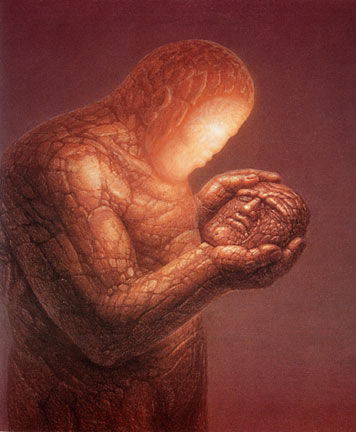
Piet Mondrian's pure abstraction
>>> 30 top examples for creative conceptual....
>>> concept of nature and fine art nature....
>>> sandra mccabe's micronature photography....
>>> best-conceptual-photography-digital....
>>> joseph-beuys
>>> david-lynchs-art-crazy-clown-time
>>> Allan McCollum the Americ...
>>> joseph-beuys-art
>>> surrealism-and-surrealists
>>> abstract-art-and-abstract-expressionism
Piet Mondrian is recognized as the purest and most methodical of the early abstractionists. He radically simplified the elements of his artwork in an effort to reflect what he believed to be the order underlying the visible world. In his ground breaking paintings of the 1920s, Mondrian strictly limited his color palette to black, white, and the three primary colors: red, yellow, and blue.
Mondrian's use of asymmetrical balance and a simplified pictorial vocabulary were crucial in the development of modern art. His iconic abstract works remain influential in design and familiar in popular culture.







A theorist and writer, Mondrian equated art with the spiritual. He simplified his work, searching to reveal the essence of the spiritual energy in the balance of forces that governs nature and the universe.
Mondrian attempted to represent the world through vertical and horizontal lines which to him represented the two opposing forces: the positive and the negative, the dynamic and the static, the masculine and the feminine.
Mondrian's singular vision is clearly demonstrated in the methodical progression of his artwork from traditional representation to complete abstraction. The paintings evolve logically and illustrate clear periods of influence art movements such as Luminism, Impressionism, and especially Cubism.
Mondrian was a founding member of De Stijl, an influential Dutch art movement that advocated pure abstraction to express a utopian ideal of universal harmony.
Mondrian's trees paintings











Quotes
"The emotion of beauty is always obscured by the appearance of the object. Therefore, the object must be eliminated from the picture."
"Every true artist has been inspired more by the beauty of lines and color and the relationships between them than by the concrete subject of the picture."
"To approach the spiritual in art, one will make as little use as possible of reality, because reality is opposed to the spiritual."
"I wish to approach truth as closely as is possible, and therefore I abstract everything until I arrive at the fundamental quality of objects."
"I don't want pictures, I want to find things out."











.jpg)












































































